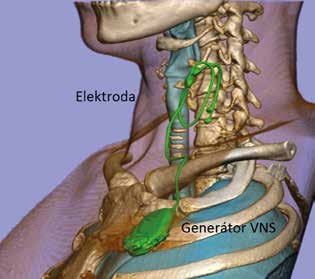Abstract
Introduction: Vagus nerve stimulation is a palliative treatment for patients with refractory epilepsy to reduce the frequency and intensity of seizures. A bipolar helical electrode is placed around the left vagus nerve at the cervical level and is connected to the pulse generator placed in a subcutaneous pocket, most commonly in the subclavian region.
Methods: Between March 1998 and October 2019, we performed 196 procedures related to the vagal nerve stimulation at the Neurosurgery Department in Motol University Hospital. Of these, 126 patients were vagal nerve stimulator implantation surgeries for intractable epilepsy. The cases included 69 female and 57 male patients with mean age at the time of the implantation surgery 22±12.4 years (range 2.1−58.4 years).
Results: Nine patients (7.1%) were afflicted by complications related to implantation. Surgical complications included postoperative infection in 1.6%, VNS-associated arrhythmias in 1.6%, jugular vein bleeding in 0.8% and vocal cord paresis in 2.4%. One patient with vocal cord palsy also suffered from severe dysphagia. One patient (0.8%) did not tolerate extra stimulation with magnet due to a prolonged spasm in his throat. The extra added benefit of vagus stimulation in one patient was a significant reduction of previously regular severe headaches.
Conclusion: Vagus nerve stimulation is an appropriate treatment for patients with drug-resistant epilepsy who are not candidates for focal resective surgery. Implantation of the vagus nerve stimulator is a relatively safe operative procedure.

